2018 is looking to be HUGE for SEO. Official mobile-First Indexing, voice search, RankBrain, artificial intelligence, machine learning, increased search personalization, and the list goes on and on. There have been many Google updates that have rocked the boat in the SEO world in the last few years, we’re going to take a look at some of the major recent Google algorithm updates and then look at some SEO Trends for 2018 that are on the horizon.
GOOGLE ALGORITHM UPDATES
INTRUSIVE INTERSTITIAL PENALTY
Those pesky ads that pop up on your phone when you’re trying to read an article became Google’s target in early 2017. What is referred to as “Intrusive Interstitials” are pop-ups that take up a large amount of screen space on mobile and disrupt the user experience. Websites that featured these pop-ups directly after a user enters their site began to experience a decrease in traffic because of this algorithm update, according to the SEO Roundtable.
What’s an SEO to do?
Be mindful of the kinds of pop-ups you place throughout your mobile site. Google is increasing its focus more and more on the user experience. Ads and pop-ups are notoriously obnoxious, so ask yourself next time you consider placing a pop-up screen on your mobile site – are you adding value to the user experience?
MARCH 2017 – THE “FRED” UPDATE
Google began to penalize sites with thin content more aggressively in the post-Panda world. In other words, this update was meant to target sites whose purpose was to drive ad revenue by bringing a ton of traffic to their sites, but not delivering much value in terms of content utility for the user. This is an example of Google cracking down on a practice that it already says is a no-no for rankings.
What’s an SEO to do?
Keep on delivering high-quality, high-word-count content that is useful and informative for your audience. If you’re overhauling your site, run a content audit and determine where you may have ‘thin content” and work on ways to improve your website’s on-page value. Siteliner is a useful free tool to identify duplicate and common content on your site that you want to keep in check, as well as analyzing the word count of your text content.
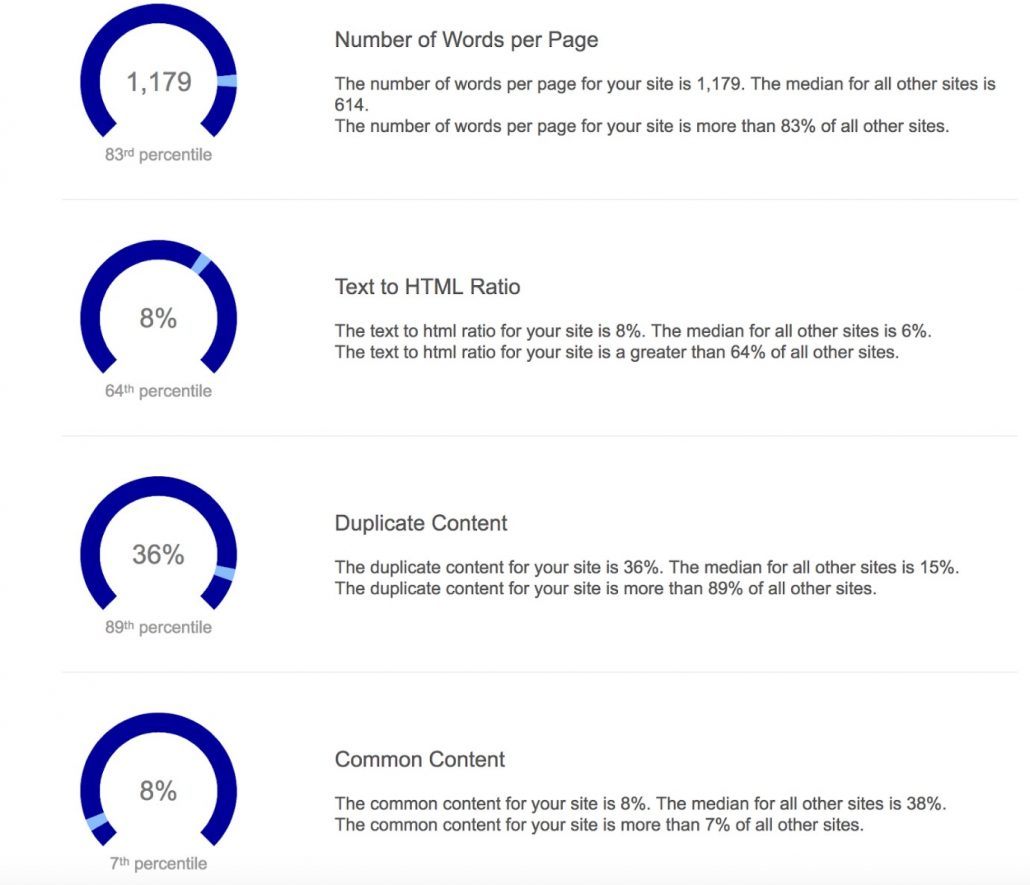
JUNE 2017 – GOOGLE JOBS SEARCH WIDGET
Google rolled out a SERP widget that targets users searching for job listings. Its right underneath the search bar and is prompted by searches like “Entry level jobs near me” and more broad job searches as well. It lets you filter by title, full-time, part-time, date posted, etc. Once you choose the job, it sends you directly to the page where the job listing lives that has the most relevant content.
What’s an SEO to do?
This update affects the staffing industry, job recruiters and the like, but it can be a preview of what’s to come as Google continues to try to mediate between a user’s search intent and related web pages.
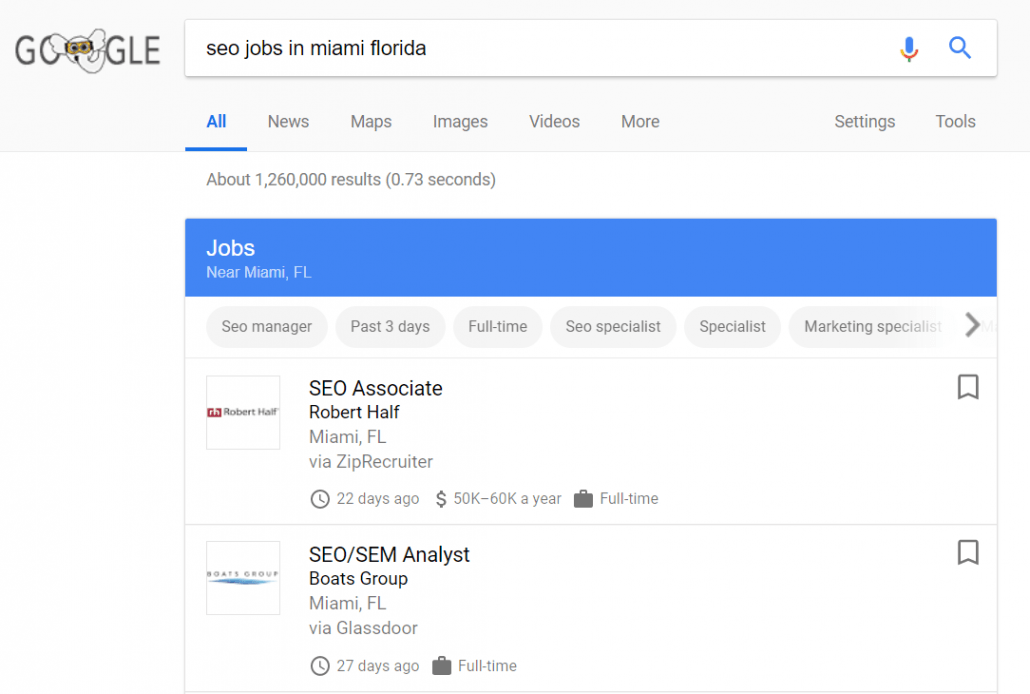
OCTOBER 2017 – CHROME HTTP WARNINGS
Back in April of 2017, the Google Security Blog declared that Chrome browsers would start to indicate whether a site was “Secure” or “Not Secure” by indicating it in the URL. Here’s an example:

HTTP sites with forms and credit card fields would have the not secure warning. The update was rolled out officially in October of 2017. Google has also officially announced that in July of 2018, they will start to mark ALL HTTP sites, regardless of whether they have field entry forms or not, as “Not Secure.”
What’s an SEO to Do?
Websites that have not yet switched over to HTTPS could experience a decrease in conversions and click-throughs as well as an increase in bounce-backs because of this address bar warning which is not visible to the user. A no-no for any sustainable SEO strategy. This is also concerning on its own, especially when you know that Chrome is the most popular browser. A user can be less likely to give out their information on a form or online transaction without the credibility of a “Secure” heading. Go into 2018 with HTTPS.
NOVEMBER 2017 – META DESCRIPTION SNIPPET LENGTH INCREASE
Update: as of May 2018, Google has reverted back to their original character limits, but many of the concepts below still apply. Your meta description should stand on its own between 155-165 characters, but you can add more lines in case Google chooses to dynamically lengthen your descriptions. For more information on this update, check out this article from Moz.
2nd Update: As of September 2018, Gary IIyes of Google has confirmed that meta data length DOES NOT matter. Your meta description can be as long or as short as you’d like it to be. The only caveat is that if you refer to the update above, Google does tend to truncate descriptions, so if you do have a meta description that is longer than 165 characters, just make sure that if any piece of your description is cut out, the rest of the text works together. In other words, every sentence should stand on its own.
Meta descriptions once had an industry standard of a 155-165 character limit. During November of 2017, there seemed to be a spike in SERP results with longer snippets within the 300-320 character range (Moz). Google confirmed this update in December with Search Engine Land, saying they wanted to provide more descriptive snippets to users by helping them better determine whether a webpage was relevant to their queries.
What’s an SEO to do?
Overall, the implications of this update meant SEO’s now had more room to be descriptive and communicate value when they set their descriptions for their pages. This can also impact the click-through rate of your web pages on organic SERP. Check out more information on this update as well as what to do to improve your SEO results on the Alphametic blog here. Start re-writing the meta descriptions to optimize your top performing web pages. Here’s an example of Alphametic’s keyword research services page when we updated the meta description.

UPDATE: 2018 CORE ALGORITHM CHANGES
AUGUST 2018 – THE MEDIC UPDATE
It seems that Google has made a core algorithm update that has affected mostly health and medicine sites. Another category of URL’s that were affected were YMYL websites (your money or your life sites). These types of sites are defined as follows by Search Engine Watch:
Your Money or Your Life (YMYL) pages are specific web pages that Google wants quality raters to hold to a higher “Page Quality” (PQ) standard than other types of web pages. They are called YMYL pages because they can directly influence your money or your life, hence the name.
Although not the only sites to be affected, these categories were disproportionately affected by this core Google update. Danny Sullivan from Google has officially confirmed this update but has stated that there is nothing to be done to improve your site, just focus on great content.
As 2018 continues, here are updates that have been in the works for years – but have really taken shape this year:
SEO TRENDS FOR 2018
VOICE SEARCH
Google CEO Sundar Pichai announced that 20% of mobile searches are voice searches. And this trend isn’t stopping anytime soon. It’s natural that people use voice search on their mobile phones while they’re on the go, and while mobile use continues to skyrocket – we can expect voice search to grow right alongside it.
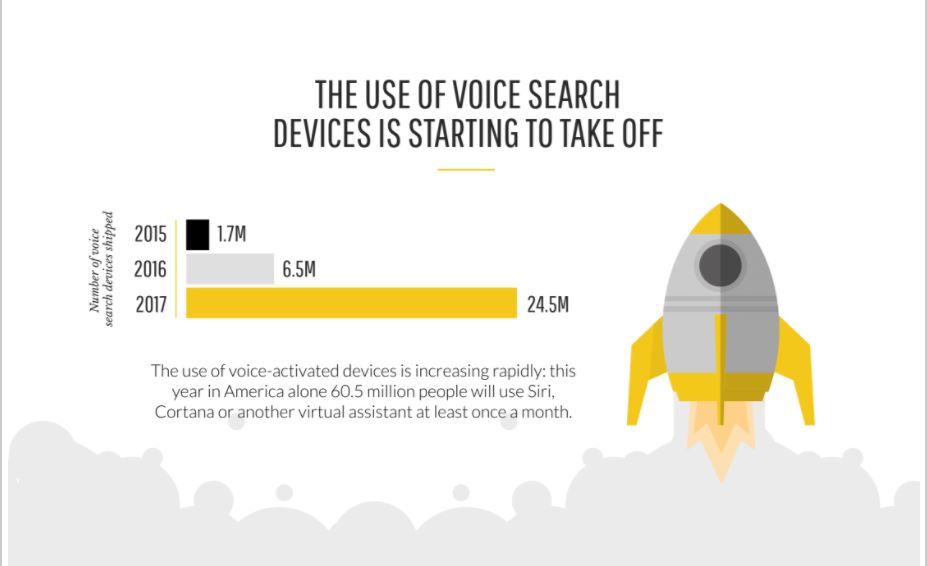
(Image source)
What’s an SEO to do?
It’s different to optimize for voice search in the sense that people speak differently than they type. They tend to use more natural language patterns than the typical, choppy search engine queries. But this actually makes optimization more intuitive. One strategy laid out by Neil Patel is to optimize your content based on question queries, since most users who use voice search are asking a question like who, what, when, where and how. Use natural, full sentences and write blog posts answering your audiences main questions and concerns. Ideally, you’d get a featured snippet, so the user’s digital personal assistant can read out your content as the best answer to their question. AnswerThePublic.com is a useful tool to discover trending “question keywords.”
MOBILE FIRST INDEXING
Mobile first indexing has been in the works since 2016, but it was announced by Google spokesperson Gary Illyes that mobile first indexing would rollout sometime in 2018. What this means is that now Google will be using your mobile content to determine your rankings to a much greater degree.
What’s an SEO to do?
Hopefully, by now, your site is mobile responsive and looks great when viewed from a mobile phone. Google spokesperson Gary Illyes has given us the heads-up that if your domain is mobile responsive – you’re solid. Sites that are not yet mobile responsive will be highly affected by the mobile-first indexing update. If there are areas of your site that could have an improved mobile experience, it’s worth it to go back and check where you can make changes in order to be fully optimized for the rollout in 2018. Use Google’s Mobile Friendly test to determine if your site is optimized for mobile.
Update: As of March 26 of 2018, Google has announced that it has started migrating sites that follow mobile best practices to mobile-first indexing. It is slowly bringing more sites on board to mobile-first indexing. They’ve also mentioned that they will notify webmasters through Search Console if their sites have been migrated.
Update: As of September 2018, Gary Illyes of Google has confirmed that 50% of websites have been converted to mobile-first indexing and that it will take years for the roll-out to take full effect. He also confirmed that sites that do not have mobile versions of their sites will still be indexed, it is simply best practice to have a mobile-responsive website. His comments were taken from his State of Search presentation.
RANKBRAIN AND SEARCH AI
Think of Google’s RankBrain algorithm as a machine trying hard to think like a human, using every possible piece of data at its disposal – social, user-generated content, browser footprints, click patterns – to match individual searchers with the best answers to their questions.

According to Google, “If RankBrain sees a word or phrase it isn’t familiar with, the machine can make a guess as to what words or phrases might have a similar meaning and filter the result accordingly, making it more effective at handling never-before-seen search queries.” If you want to get geeky, RankBrain converts the textual contents of search queries into “word vectors,” also known as “distributed representations,” each of which has a unique coordinate address in mathematical space. Vectors close to each other in this space correspond to linguistic similarity.
In more plain English, when people type a search query – aka a keyword – that’s never been made before, RankBrain attempts to map this query to words – or “entities” (clusters of words) – that have the best chance of matching it. RankBrain attempts to guess what people really mean when they make queries over time, records the results, and adapts results to provide what it sees as better user satisfaction.
If you’re serious about SEO, you need to optimize for RankBrain. Why? Google recently announced that RankBrain is Google’s third most important ranking signal. And it’s becoming more important every day.
What’s an SEO to do?
Brian Dean of Backlink recommends rethinking your keyword research strategies to optimize for RankBrain. He predicts that the Long tail keywords are becoming dead due to how well RankBrain understands that these long-tail terms often refer the same thing. So Google shows nearly identical search results. Brian recommends that SEOs focus on the “medium tail keywords” instead. In the example below, he demonstrates how to spot these search queries in your keyword reports.
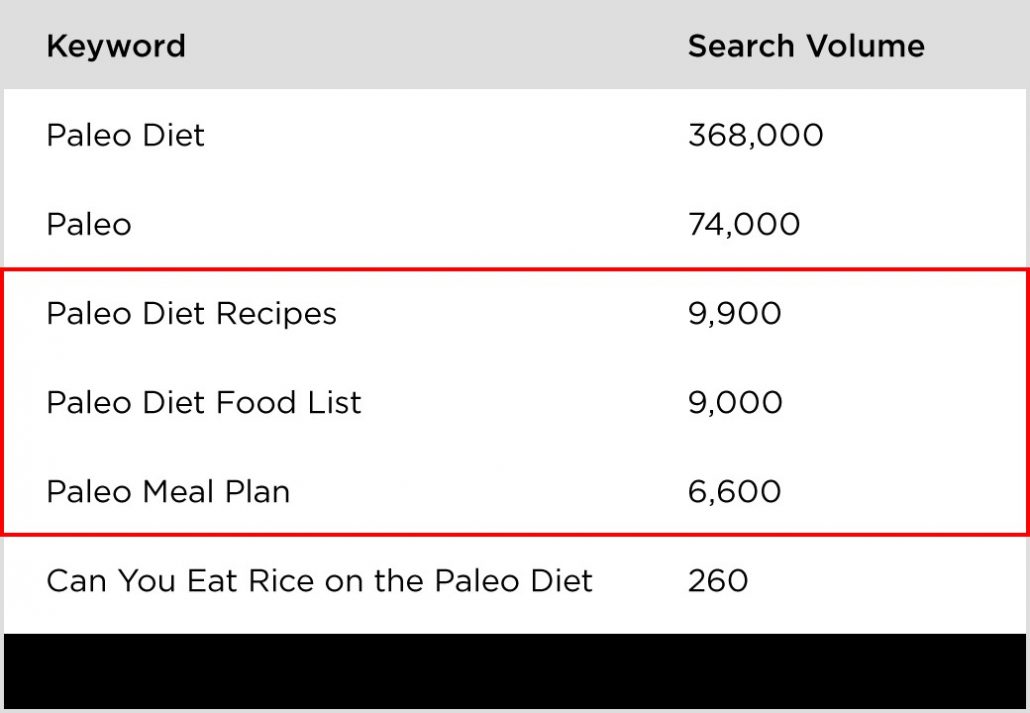
Image Source: Backlinko
“When you optimize your page around a medium tail keyword (and make that page awesome), RankBrain will automatically rank you for that term… and thousands of similar keywords,” says Brian Dean.
BRAND MENTIONS OVER LINK BUILDING
There’s been a lot of buzz recently over whether “no-follow” links and brand mentions have any ranking weight, supplementing the good old-fashioned “do-follow” links. The evidence, based on this excerpt analyzed by Neil Patel from a Google Panda Patent seems to suggest that Google’s algorithm is learning to take into account unlinked brand mentions across the web as an indication of authority. That both do-follow links and “implied links” are being looked at more closely.
What’s an SEO to do?
This is GREAT news in the SEO world. Links still matter, but now you can get more credit for all those social mentions as well as unlinked brand mentions online in a more direct way. You also get credit for other areas of the web where people are talking about your brand, but not necessarily giving you the links you’d like. This is an opportunity for SEO’s to expand their backlink strategies to incorporate other PR-focused outreach methods into their framework for a more well-rounded online footprint that isn’t just focused on earning hard-to-get links.
HIGHLY PERSONALIZED SERPS
SERP personalization has been a thing since as far back as 2007. But as of recent years, Google has gotten very sophisticated with its algorithm by serving up results that are based on your local geography, your search history, your interests and activities throughout other Google apps. This means that every user is going to have a search experience that is unique and personalized, like this search for taco places in Miami which not only gave me results for Miami but pinpointed EXACTLY where in Miami I was and what was close by:
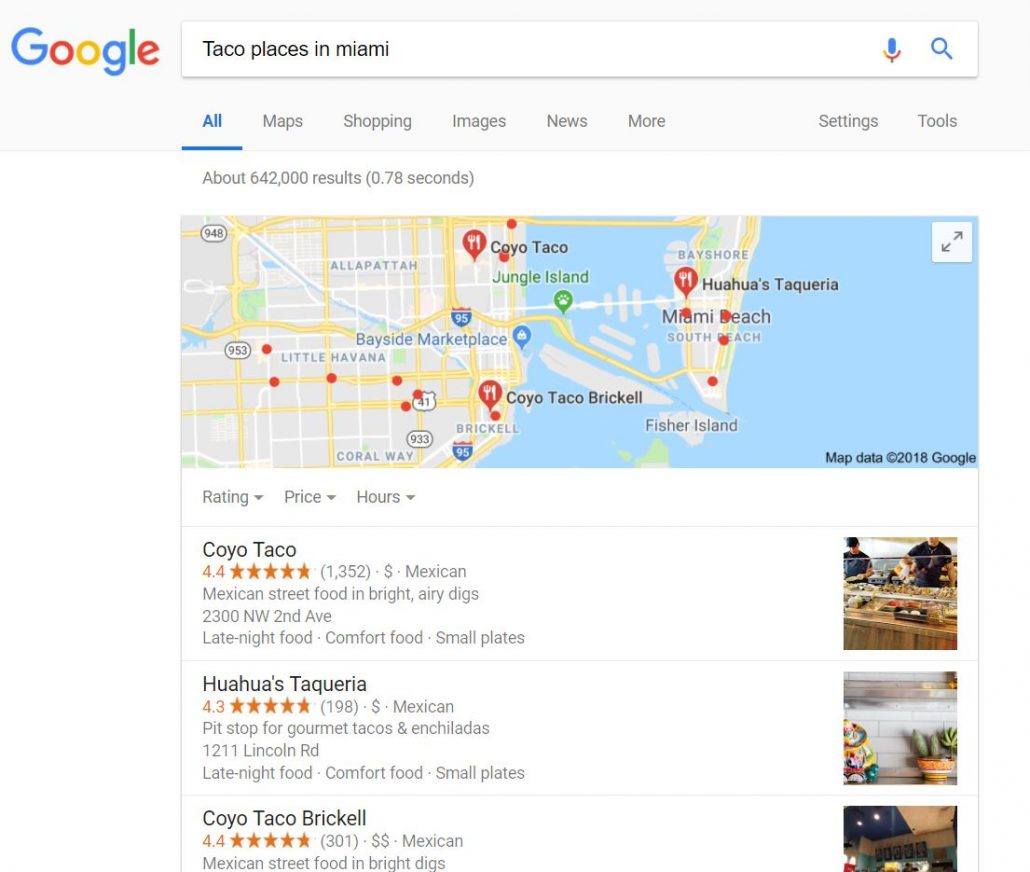
What’s an SEO to do?
Although you can’t guess what every user’s personal results are going to be, users that DO click on your site and engage with it are more likely to see you again in search results. If every user is getting personalized data, how do you know your keyword tracking data is accurate?
Location is a huge factor in personalization, so one way around this is by setting up your tracking by individual location. You can use a tool called Rank Tracker to customized your rank tracking by location to get more “Real-time” results of users and be assured your results are more targeted..
Also, if you’re a local brick and mortar business, it still pays off to optimize your sights for your local geography, add schema markup on your site, and make sure that all your business listings are up-to-date and fully optimized.
THE GIST OF IT
Google continues to update and test its algorithm in a way that encourages practices it wants to make standard (like HTTPS certified and mobile-responsive sites) and changing their own user’s experiences to give them as much information as possible up front.
These trends are here to stay, so the question is, how will they fit into your SEO strategy?
Want to take your SEO performance to the next level in 30 days? Check out Alphametic’s SEO Quick Wins.








0 Comments